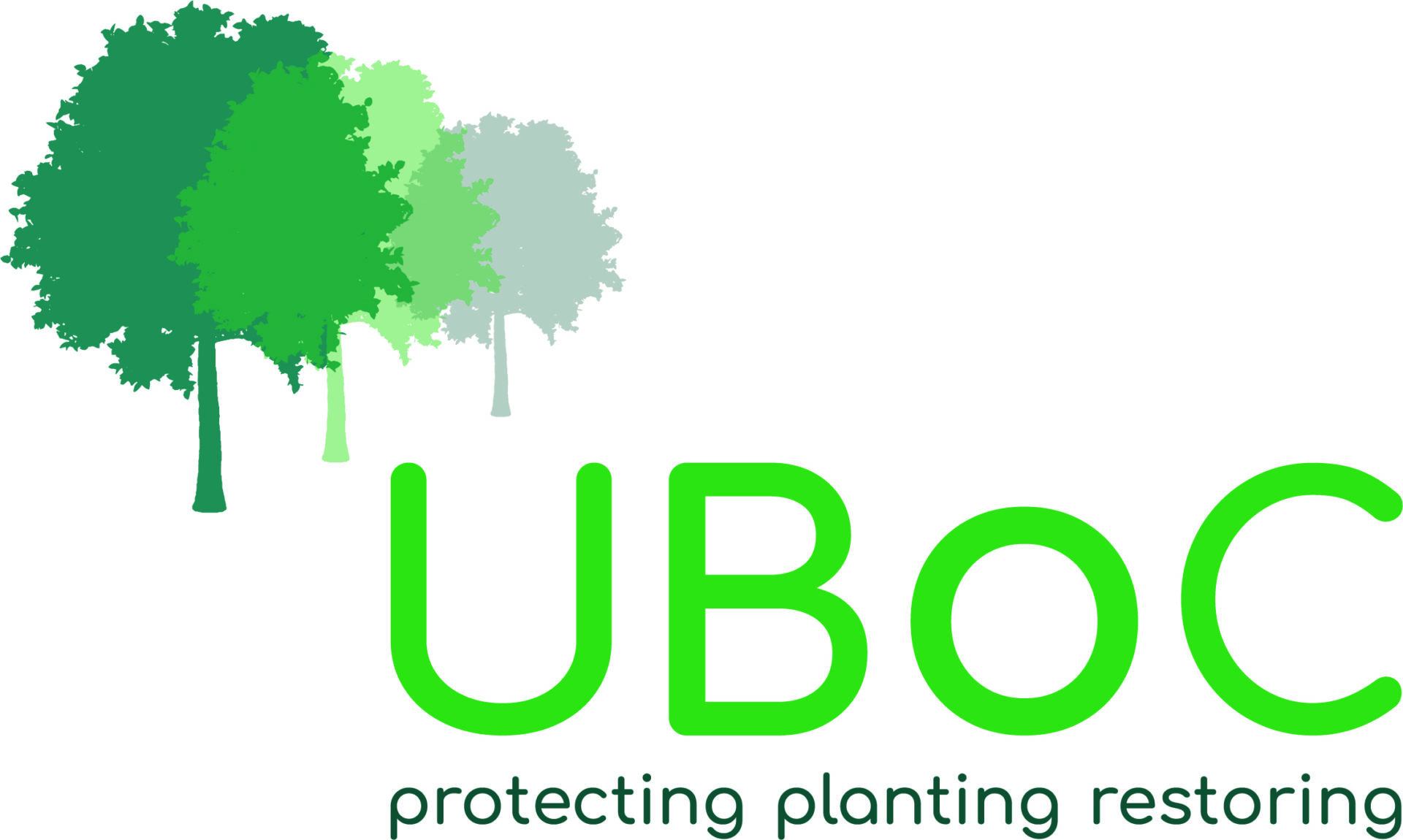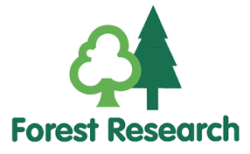i-Tree Leeds: Putting a Value on the City’s Trees
As part of the Leeds4Trees project we are exploring the value of trees and green spaces across the city of Leeds, in collaboration with UBoC, the Sustainability Service at the University of Leeds, Leeds City Council, The Woodland Trust, Treeconomics and Forest Research.

Urban green spaces such as gardens, parks and woodlands provide many benefits to people and vital habitats for wildlife. Urban vegetation stores carbon, helping to mitigate climate change, and reduces the likelihood of flooding by storing excess rain water. Green spaces can improve air quality, limit the impact of heatwaves, encourage people to undertake physical activity and reduce depression. However, these benefits are difficult to quantify and compare to other uses of urban land.
Local authorities are under considerable pressure to cut spending on the services they provide and those responsible for parks and woodlands lack robust information about the value to society of the green spaces they manage. The i-Tree Leeds project aims to provide evidence that can be used to support the preservation and creation of green space and woodland in Leeds.
Councillor Judith Blake, Leader of Leeds City Council said, “Leeds City Council wants to see the Northern Forest become a reality and we’re developing a plan to show where new trees and woodland should be created across the city. The council also knows that trees planted in the right places bring enormous benefits including helping with carbon storage, reducing pollution, and helping deal with flooding. The i-Tree Leeds project aims to provide evidence that can be used to support the preservation and creation of green space and woodland in Leeds.”
i-Tree Campus
The first stage of our Leeds-wide project involved a detailed evaluation of the trees on the University of Leeds campus as part of the Sustainability Service’s Living Lab scheme. As well as understanding the current woodland resource, this assessment will facilitate future decision making on planting in and around campus.
 During the summers of 2017 and 2018, over 1400 trees were surveyed by volunteer staff and students from the University. Over 130 different tree species were identified and their measurements taken. LEAF scientists then analysed the data using i-Tree Eco (v6), a tool developed by the USDA Forest Service.
During the summers of 2017 and 2018, over 1400 trees were surveyed by volunteer staff and students from the University. Over 130 different tree species were identified and their measurements taken. LEAF scientists then analysed the data using i-Tree Eco (v6), a tool developed by the USDA Forest Service.
If you have any sort of interest in trees, it will not escape your attention that they are under threat, and increasingly in the public limelight. The nation is voicing its concern – especially in urban environments across the UK, ” said Joseph Coles, Street Trees Project Lead for the Woodland Trust.
The campus trees are estimated to store over 500 tonnes of carbon (which is almost 2000 tonnes of carbon dioxide), and remove around 18 tonnes of carbon (66 tonnes of carbon dioxide) from the air every year.
“i-Tree Leeds is a perfect example of a strong local partnership working hard to calculate the value of trees; measuring their benefits at a community scale, aiming to build a broader picture of their contribution to the environment, and securing their place in a sustainable city of the future. The Woodland Trust’s Street Tree project is pleased to support this positive initiative, ” added Joseph Coles.
Trees are able to capture particulate pollution from the air because it sticks to their leaves, needles or bark. Gases in the air, such as nitrogen dioxide (NO2) and ozone (O3), are taken in through holes on the leaf surface. In total, the campus trees are estimated to remove over 350 kg of pollution from the air every year.
Read our full report here.
The map below shows locations and species of trees on the University of Leeds campus and some of the benefits they provide. The map has three layers:
- Species and measurements
- Carbon storage and sequestration
- Pollution removal
The map is easiest to view one layer at a time. To open a larger version in a new window click on the square icon in the top right corner. To view the map menu click on the window icon in the top left corner of the map.
To enable a layer either tick the box next to the layer name (e.g. Species and measurements) or click on the layer name. The icons contained in that layer will appear on the map. To disable a layer un-tick the box or click on the layer name.
Click on a tree icon or pointer to display information about that tree. Click on a part of the map without an icon to close the tree menu, or click the back arrow in the top left corner.
If you're interested to find out more about the methods, or access some of our data for further research, please contact us at info@uboc.co.uk
To see a list of trees in each species, pollution or carbon category, enable the layer and then click the drop-down arrow next to the top category, e.g. Common lime in Species and measurements. Scroll down the list and click on a Tree ID number to highlight that tree on the map and to display the data for that tree.
For walking directions to a particular tree, click its icon on the map or select it from a category, then click the direction arrow at the top right of the red menu bar.
i-Tree Middleton
During the summer of 2018, the i-Tree Leeds project headed to Middleton in Leeds, “Having an i-Tree Eco survey in Middleton Park Ward will let us accurately plot where trees are, as well as their species, size and condition. It will help us measure how the trees help the local ecosystem, such as the amount of carbon they store and how much pollution they remove. At the same time each tree’s value can be calculated to show how much benefits it provides for the local community as monetary values,” said Cllr Blake, adding “what we learn from this will help us to know what the trees are doing to help improve health and wellbeing, and at the same time we hope to demonstrate the impact of a lack trees in other areas. This will help the city target future tree planting and woodland creation to those parts that need it most.” Results from the tree surveying in Middleton Ward will be available later in 2019.
 Information about the map layers
Information about the map layers
Species and measurements: This layer contains the tree species, the measurements taken during the survey, and the structural value (the cost of replacing that tree with another one of the same species and size). Only the most common species are shown in the menu. Less common species are included in ‘Other’.
Carbon storage and sequestration: This layer contains information about the amount of carbon stored and the amount of carbon absorbed or sequestered per year by each tree. The darker the icon colour, the more carbon the tree stores.
During photosynthesis trees use energy from sunlight to convert CO2 (carbon dioxide) from the atmosphere and water (H2O) from the ground into glucose (C6H12O6) and oxygen (O2). The glucose is used in respiration (conversion of glucose into usable energy) and the oxygen is emitted to the atmosphere.
 The tree converts glucose into larger molecules, such as cellulose. Cellulose is the main component of plant cell walls, and gives the tree its strength. Carbon sequestration is the process of removing CO2 from the atmosphere and using the carbon to produce new cells to thicken or strengthen its tissues. The carbon is stored in the tree until it decomposes at the end of its life.
The tree converts glucose into larger molecules, such as cellulose. Cellulose is the main component of plant cell walls, and gives the tree its strength. Carbon sequestration is the process of removing CO2 from the atmosphere and using the carbon to produce new cells to thicken or strengthen its tissues. The carbon is stored in the tree until it decomposes at the end of its life.
Trees therefore play a vital role in absorbing CO2, a greenhouse gas, from the atmosphere, and in regulating our climate. Note how the largest trees on campus store and sequester the most carbon.
How do we value carbon storage and sequestration? The UK government calculates the value of carbon to make it easy to evaluate the climate change impacts of public policies and projects. The carbon value is related to the impact of that carbon dioxide remaining in the atmosphere; the current cost or price of non-traded carbon in the UK is £64 per tonne of CO2. We have used this value to calculate the value of the carbon storage and sequestration provided by trees on campus, with a higher value indicating a greater benefit.

Pollution removal: This layer contains information about the amount of pollution removed per year from the atmosphere by each tree. The darker the icon colour, the more pollution the tree removes. These calculations are based on pollution concentrations at a nearby monitoring station so will not reflect different pollution levels across campus. Pollutants are absorbed by trees through stomata (pores) in their leaves, and stick onto leaf and bark surfaces. We have calculated removal of five pollutants:
Ozone, (O3) can cause damage and irritation to the airways and lungs and aggravate existing conditions such as asthma. It can also damage vegetation. At ground level in urban areas it is formed by complex reactions of volatile organic compounds (VOCs) with oxides of nitrogen (NOx). Ozone formed over the continent can be transported over the UK by the movement of air masses.

Nitrogen dioxide, (NO2) can inflame the airways and lungs and can reduce lung performance. People with asthma are particularly vulnerable to NO2. NO2 is produced during combustion (burning) of fossil fuels in vehicle engines, power stations, and domestic applications such as central heating boilers.
Particulate matter, (PM2.5) refers to particles in the air that are less than 2.5 micrometres (μm) in diameter. In UK towns and cities these very small particles are produced by road vehicles, by some industrial processes, and by sources of smoke such as coal or wood fires. Chemical reactions of sulphur dioxide (SO2) and nitrogen oxides (NO and NO2), and long range transport of polluted air from outside the UK, also contribute to PM2.5 levels. Long-term exposure to PM2.5 increases the risk of respiratory and cardiovascular disease.

Sulphur dioxide, (SO2) can irritate the linings of the nose and throat, causing a narrowing of the airways. People who have asthma are particularly sensitive to SO2. Combustion of solid fuels, such as in coal-fired power stations, is the main source of SO2 in the UK. SO2 undergoes chemical reactions that produce particulate matter.
Carbon monoxide, (CO) forms during incomplete fuel combustion. CO has a role in ground-level ozone formation. Inhaling CO causes decreased oxygen uptake by the lungs, leading to headaches, dizziness, nausea and more serious symptoms at very high concentrations. Petrol vehicle engines, gas-fired power stations, and domestic heating and cooking are the largest source of CO in UK towns and cities.

How do we value pollution absorption? The UK government uses “damage costs” as a simple way to value changes in air pollution. Damage costs are an estimate of the cost to society of a change in emissions of different pollutants, for example the cost of increased medical care that would be required if NO2 emissions increased. We have used these damage costs to put a value on the pollution absorption by trees on campus. A higher value indicates more pollution absorption and therefore a greater benefit to society.
Research area:
Green Space